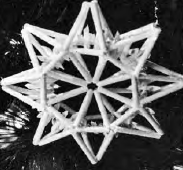Part II: Lithuanian Immigration to the United States
Press
The Russian ban on printing from 1864 to 1904 severely stunted the growth of the Lithuanian press. Freedom of the press in the United States was to help alleviate this situation, but it was a difficult task to initiate Lithuanian printing in America for several reasons. In the first place, economic conditions left little extra for such luxuries as books or periodicals and the constant threat of unemployment meant that frugality was the watchword. Second, individuals with printing skills were difficult to find in the beginning, and of course, this type of venture often meant working at night after a ten or twelve hour workday elsewhere. Third, the purchase of equipment was costly. Finally, since communications were extremely poor at the end of the nineteenth century, it was difficult to get subscribers. Even those who were aware of the attempt to establish a press were hesitant about such a new undertaking. One thing has to be kept in mind, however: it was not a lack of literacy among Lithuanians that caused difficulties in the beginning. As mentioned, the Lithuanians had a high degree of literacy.
The attempts were modest, and fewer than those of other ethnic groups immigrating at this time, since other nationalities had the press in their native homelands to provide skilled individuals. But even with this slow start the Lithuanians were to surpass many others. In the beginning the activity centered on one individual, Mykolas Tvarauskas, who was a school teacher in Lithuania and had to leave because of his activities in the 1863-1864 insurrection. In 1874 he bought a printing shop in Shamokine, Pennsylvania, and the following year printed a Lithuanian-English, English-Lithuanian dictionary, the first Lithuanian book to be printed in America. Unfortunately, a fire destroyed his initial efforts. Four years later he initiated the first Lithuanian newspaper, Lietuwiszka Gazieta (The Lithuanian Newspaper), but this lasted for only a short time due to a lack of financial support.
In 1884 Tvarauskas and Jonas Šliupas published Unija (Union), which was also of short duration because freethinker Šliupas clashed with the basically pro-Catholic Tvarauskas. So in the following year Šliupas began to edit Lietuviszkas Balsas (The Lithuanian Voice). With Šliupas, who was well educated, there was a literary uplifting of Lithuanian printing, and this newspaper was read both here and in Lithuania, where it circulated clandestinely. He relentiessly fought for the independence of Lithuania and actively pushed for the separation of Lithuanians from the Poles. The importance of the Lithuanian-American press continued to increase in regard to providing printed materials for Lithuanians in Lithuania, so much so, that the 1547 to 1904 period, Lithuanian-Americans provided one-seventh of all books printed.[1]
The number of newspapers and other periodicals also began to blossom. By 1930, there were 40 Lithuanian periodicals printed in the United States, and of these, four were dailies.[2] By 1972 there were forty-two periodicals being published, including three dailies.[3]
One of the outstanding contributions of the post-world war immigration was the work with encyclopedias. Juozas Kapočius, who has been the driving force in this area, published the thirty-six volumes of the Lithuanian language Lietuvių Enciklopedia (Lithuanian Encyclopedia), and the first four volumes of the six-volume Encyclopedia Lituanica, which is printed in English. The magnitude of this work can only be appreciated when one takes into account again the size of the Lithuanian-American community in relation to other ethnic groups.

- Vaclovas Biržiška, "The American-Lithuanian Publications, 1875 to 1910," Journal of Central European Affairs, XVIII, (January, 1959), 397-401. ↵
- Roger Rickleffs, "Newspapers Published in Foreign Languages Struggle to Survive," The Wall Street Journal, LII, No. 90, 1. ↵
- Lubomyr R. Wynar, Encyclopedic Directory of Ethnic Newspapers and Periodicals in the United States (Littleton, 1972), 11. ↵
